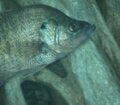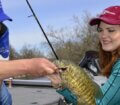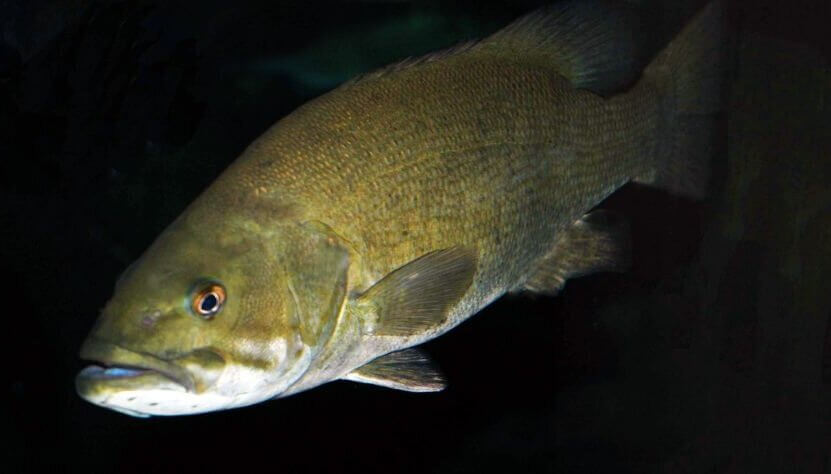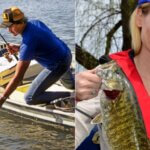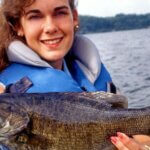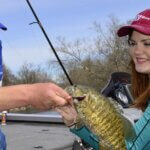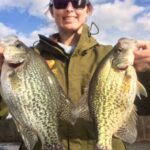Editor’s Note: One of the best big-and-smallmouth-bass waters is the Tennessee River, especially the southern half that runs through north Alabama, west Mississippi, and south Tennessee. Pickwick and Wilson Lakes are the two lakes that get the most publicity and produce the biggest smallmouth bass. These two lakes not only produce great smallmouth fishing, but equally as good, if not better, largemouth, spotted, hybrid saltwater, and striped bass fishing and catfishing. Brad Whitehead of Muscle Shoals, Alabama, guides for smallmouths and other fish. To learn more about Whitehead, visit his Facebook. You can also successfully use Whitehead’s tactics to catch hot-weather smallmouths where you live.
As a youngster in the late 1950s and early 1960s, my dad, my brother, and I would go to Fisherman’s Resort in Town Creek, Alabama, below Wheeler Dam, at the headwaters of Wilson Lake, and rent a wooden boat for $2 that came with a dog food can to bail the water out. My dad always brought with us one of the fastest motors on the lake, a 2.5 horsepower motor, which he cranked with a piece of cotton rope with a knot on one end of it and a wooden handle at the other. We’d catch fish all day long in the summertime in the Wheeler Dam tailrace.
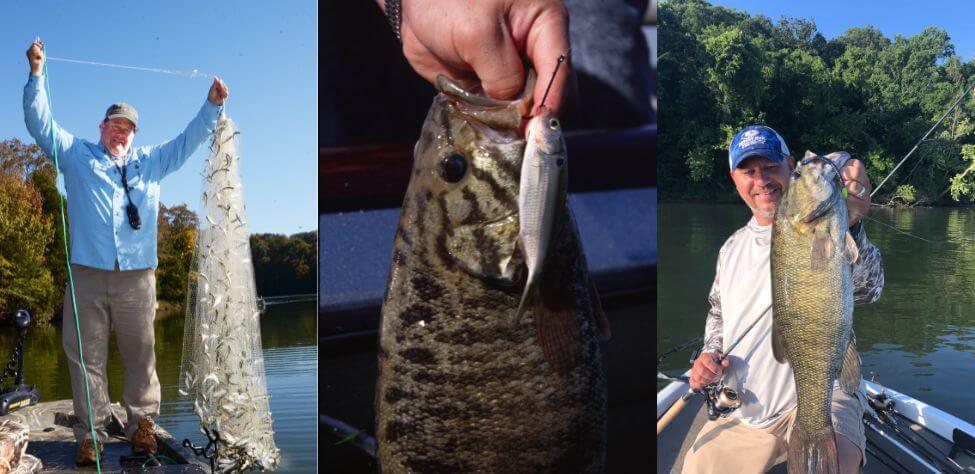
Many things have changed since then, but smallmouth fishing has consistently improved. We asked Brad Whitehead, who enjoys guiding smallmouths, “What’s it like to catch big smallmouths? How do you catch them?”
Brad said, “I’ve been fishing these two lakes, Pickwick and Wilson, since I was six years old. I’m 47 now, and I’ve been guiding for the last 20+ years on the Tennessee River for both crappie and smallmouth bass. But, right now, in this hot weather – the smallmouth fishing on Wilson and Pickwick is absolutely fantastic. Now that the spawn is over, and the weather’s hot, the smallmouths are moving out into the current to feed on shad and other bait fish. If you like to fish, artificial lures, top-water baits, and/or jigs they all will produce great smallmouth results.
“But I also like to fish with live bait, which means I’ll catch various fish. We use live threadfin shad minnows since every fish in the Tennessee River eats this bait. The main key to catching the bait and the smallmouth bass is current. In late summer and early fall, these power-plant lakes start having constant currents, making these fish bite. Live-bait smallmouth fishing starts with a cast net, which we use to catch the live threadfin shad. We start by throwing a cast net. If you want to get your cast net and throw it, there are plenty of videos on YouTube on how to do it. Most of the time, you can see the schools of threadfin shad on top of the water. I like to find the shad in less than 10 feet of water. I prefer a 6-foot cast net, but a friend of mine prefers an 8-foot cast net.”
To learn more, call Brad Whitehead at 256-483-0834 or email him at bradwhiteheadfishing@yahoo.com.
Expert Guidebooks on Bass Fishing: Best Sellers

If you want to become the best you can be, find someone who’s already become the best at what you want to do and follow his or her instructions. This is what I’ve done in my new book, Bass Pros’ Season by Season Tactics.
In this book, I’ve chosen some of the best bass fishermen to give you advice on how to find and catch bass during each period of a bass fish’s life, including professionals like Kevin VanDam, Denny Brauer, David Fritts, Rick Clunn, Larry Nixon, George Cochran, Mark Davis, Woo Daves, Gary Klein, Davy Hite, Michael Iaconelli, Skeet Reese, Mark Rose, and Shaw Grigsby.
My hope is that this book will help you find and catch more bass at every time of the year and each day you’re on the water. The men included in this book are some of the best mentors I know of for successful bass fishing anywhere in the nation.
VERSIONS: AUDIBLE & PRINT
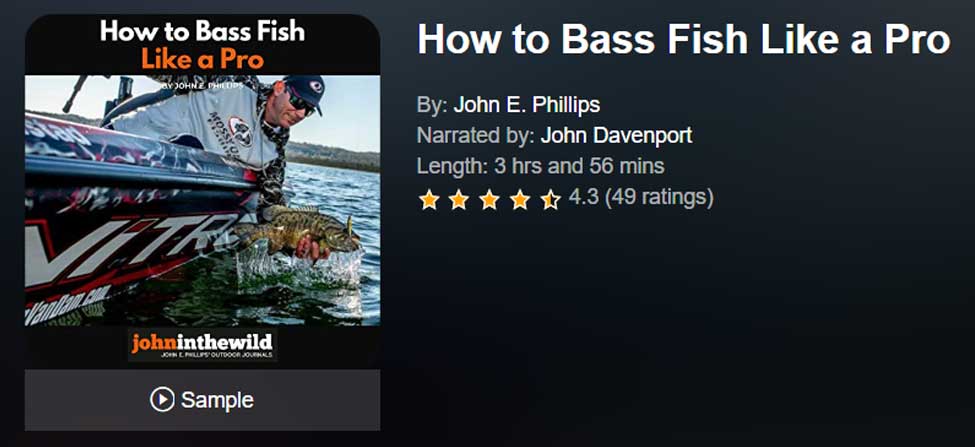
How to Bass Fish Like a Pro
If you could sit down and interview some of the best pro bass fishermen in the world, what would you want them to tell you to help you improve your bass fishing skills?
In this book, How to Bass Fish Like a Pro, Kevin VanDam explains how he catches bass consistently, and how he fishes all 12 months of the year. In the bonus chapters, he will tell you how to fish for hot-weather bass.
Denny Brauer will tell you the ways he hates to fish, how he picks the best fishing lures for different water and weather conditions, and will give you his best fishing tips for hot weather. In Brauer’s bonus chapters, he’ll teach you when to flip a jig, a tube, or a creature bait and tell you his three tips for how to be a better fisherman.
Mark Davis, in Chapter 3 of the book, explains his five secrets to becoming a better bass fisherman, how to turn your bass fishing around to the positive side, and how to catch hot-weather bass. In the bonus chapter, you’ll get six different interviews with Davis, where he tells you: three tips for becoming a better bass fisherman; his three favorite bass lures; and how to keep a big bass on the line and get it to the boat.
James Niggemeyer tells you how to become a bass pro. He also tells you how to catch bass when the weather sizzles. In Niggemeyer’s bonus chapter, he explains how to move from being a bass-club fisherman up to being a pro.
Mark Rose will explain his five favorite go-to bass lures, and how to catch bass in the middle of the summer.
In this book, you’ll hear from top-performing pro fishermen about how they catch big bass consistently, and what they do to win millions of dollars as professional bass fishermen.
VERSIONS: AUDIBLE, KINDLE & PRINT

Catch the Biggest and Most Bass in Any Lake
If you were having open-heart surgery at the hospital, you’d want the best doctor with the most experience and the latest equipment and techniques that money could buy to do your operation. You’d study these doctors’ credentials to learn who was the best.
This is the same type of research that author John E. Phillips has done with the best bass fishermen in the nation to solve the problem of how to find and catch the biggest and the most bass in any body of water that he fishes.
This is the same type of research that author John E. Phillips has done with the best bass fishermen in the nation to solve the problem of how to find and catch the biggest and the most bass in any body of water that he fishes.
In this book, you’ll hear about the techniques, tips, baits, lures, and tackle that 18 of the nation’s best professional fishermen use to support their families by winning bass tournaments and catching the most and the biggest bass they can in every tournament they fish.
Most of these anglers are Bassmaster Classic winners, Megabucks winners, Angler-of-the-Year and FLW Tour winners – like Rick Clunn, Kevin VanDam, George Cochran, Mark Davis, Paul Elias, Skeet Reese, Larry Nixon, Hank Parker, Ken Cook, Denny Brauer, Alton Jones, and Jay Yelas.
Also, every serious bass fisherman should know Timmy Horton, Mark Rose, Randy Dearman, Harold Allen, Mike Wurm, and Shaw Grigsby, men whose tactics you’ll find in this book. To learn how to fish for bass and change your bass-fishing trips from fishing trips to catching trips, this book is a must-have.
VERSIONS: AUDIBLE, KINDLE & PRINT
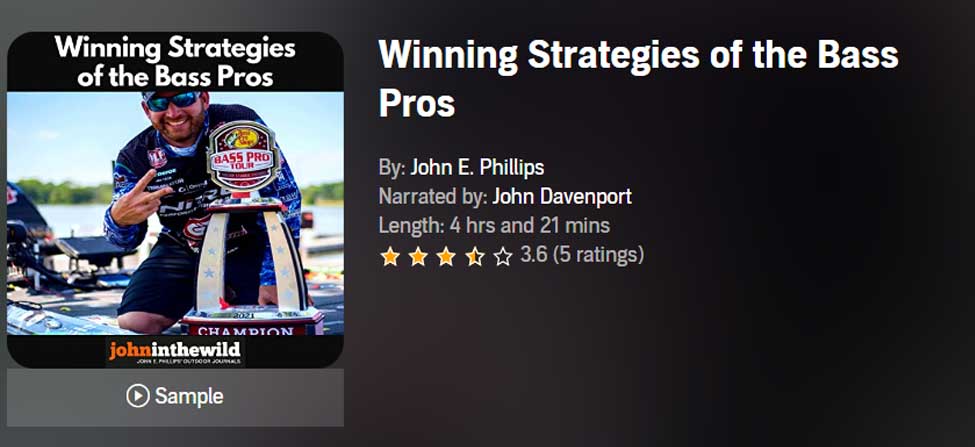
Winning Strategies of the Bass Pros
I learned many years ago if you want to be the best you can be, then you need to learn from the best – particularly when you want to be the best bass fisherman possible. That’s why I’ve written Winning Strategies of the Bass Pros about 11 top bassers.
If you’re wondering at what age you can start learning about bass fishing, you’ll see in the first two chapters about two young men who have come up through the ranks of collegiate bass tournaments – Jordan Lee, who won the Bassmaster Classic in 2017, and Dustin Connell, who won $100,000 in a B.A.S.S. Elite Series tournament in Mississippi in 2017. Top-name pros on both the B.A.S.S. circuit and the FLW circuit are in this book, including Kevin VanDam, Jay Yelas, George Cochran, Rick Clunn, Larry Nixon, Woo Daves, Randy Howell, Scott Canterbury, and Gary Klein.
VERSIONS: AUDIBLE, KINDLE & PRINT
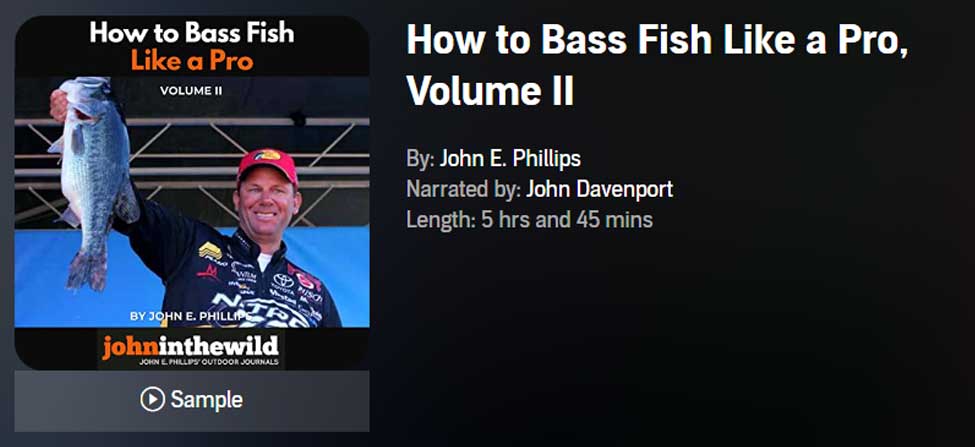
In How to Bass Fish Like a Pro, Volume II, you’ll learn tips and tactics from 21+ Bassmaster Classic winners, two Major League Fishing champions, and 20+ Bassmaster Anglers of the Year about some of the dramatic changes in bass fishing, like:
Depth Finders: You need the latest and greatest depth finders available, since they’re the brains of a bass boat with maps, GPS, side scanning, down scanning, and forward scanning features that enable you to see underwater structures and fish 100-feet away with a 360-degree view. Today’s competitive bass anglers may have four or five depth finders located on the consoles and the bows of their boats.
Other Changes in Equipment: Power fishing for bass using heavy line and rods, big baits, and bait-casting reels that resemble winches have given way to finesse fishing and new techniques like fishing the Ned Rig, the Neko Rig, the Chicken Rig, and the Tokyo Rig on spinning tackle and line as small as 6-10 pounds.
The Growth in Youth and College Competitions for Bass: A young person can begin competition fishing as early as the second grade and continue throughout high school. After that, if the competitor qualifies, he/she may win a scholarship to fish on a college team that eventually may lead them to a professional bass-fishing career.
Changes in the Ways Anglers Bass Fish: Many of the most-consistent winners never pick-up their rods to fish during pre-fishing. Instead, they’ll idle across the water, dropping waypoints from their electronics in places where they’ve identified schools of bass holding. These contestants will have at least 50-250 locations, where they’ve pinpointed schools of bass before a tournament starts.
VERSIONS: AUDIBLE, KINDLE & PRINT
Tomorrow: Rigging for Hot Weather Smallmouth Bass

